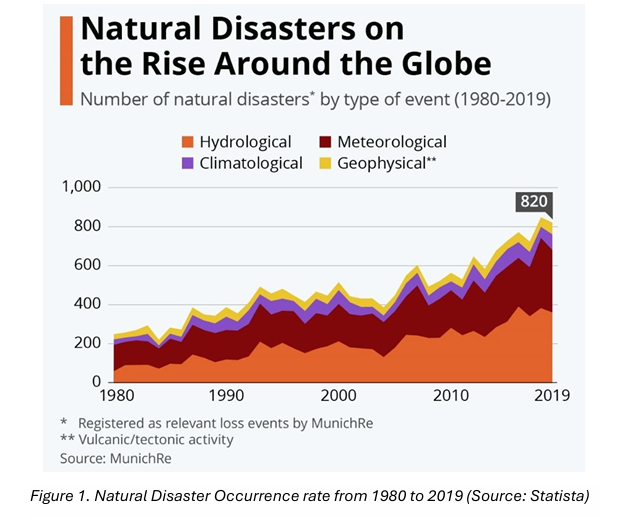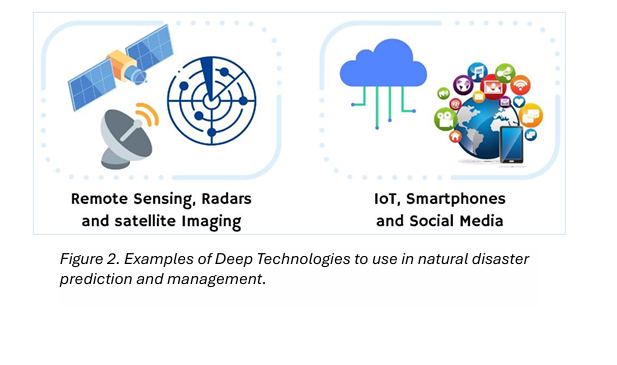Leveraging Deep Technologies to Prevent Natural Disasters: A Transformative Approach
Natural disasters pose significant threats to communities worldwide, causing immense loss of life and property damage. Due to climate change, natural disasters are occurring more significantly around the globe (Figure 1.) However, with the advent of deep technologies such as artificial intelligence (AI), machine learning (ML), robotics, and geographic information systems (GIS), there lies a transformative potential to prevent and mitigate the impact of these calamities. In this blog article, we explore various deep technologies and their potential to revolutionize disaster management.

Artificial Intelligence (AI) and Machine Learning (ML) – – – AI-powered predictive models analyze vast amounts of data to forecast natural disasters with greater accuracy and precision. ML algorithms process historical data to identify patterns and trends, enabling early warning systems and proactive decision-making. Natural language processing (NLP) techniques analyze social media data to assess public sentiment and enhance situational awareness during disasters.
Robotics and Drones – –
Autonomous drones equipped with sensors and cameras survey disaster-affected areas, providing real-time imagery for damage assessment and search-and-rescue operations. Robotic systems navigate hazardous environments to deliver essential supplies, conduct reconnaissance missions, and assist in evacuation efforts. Geographic Information
Systems (GIS) and Remote Sensing (RS) – –
GIS technology integrates spatial data to create comprehensive risk maps, identifying vulnerable areas prone to natural disasters such as floods, earthquakes, and wildfires. RS techniques, including satellite imaging and LiDAR technology, enable precise mapping of terrain features, vegetation density, and land cover changes, aiding in disaster preparedness and response planning.
Benefits of Deep Technologies in Natural Disaster Management
- Early Detection and Warning: Deep learning algorithms can detect subtle changes in
environmental conditions, issuing timely warnings to at-risk populations.
- Rapid Response and Recovery: Robotics and drones facilitate swift deployment of
resources and personnel to disaster-affected areas, expediting search, rescue, and
recovery efforts.
- Data-Driven Decision Making: AI-driven analytics provide decision-makers with actionable insights, enabling informed responses and resource allocation based on real-time data.
- Community Resilience Building: By leveraging deep technologies, communities can enhance their preparedness and resilience to natural disasters, reducing vulnerability and mitigating future risks

Challenges and Future Directions
While deep technologies offer immense potential in natural disaster management, several challenges remain, including data privacy concerns, technological infrastructure limitations, and ethical considerations. Moving forward, continued research, collaboration, and investment are essential to overcoming these challenges and maximizing the benefits of deep technologies in disaster prevention and response.
Projects like PREVENT play a vital role in integrating deep technological skills into higher education curricula, ensuring that graduates are well-prepared to address the complexities of disaster management in today’s world. By incorporating these skills into educational programs, universities can provide students with both practical experience and theoretical knowledge of advanced technologies. This not only equips them for careers in disaster management but also fosters innovation and progress in the field.
